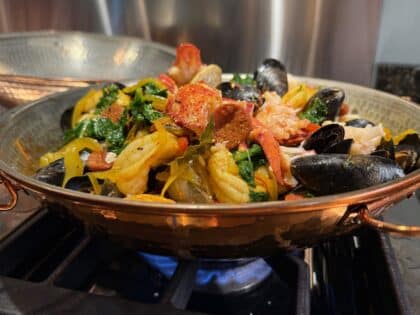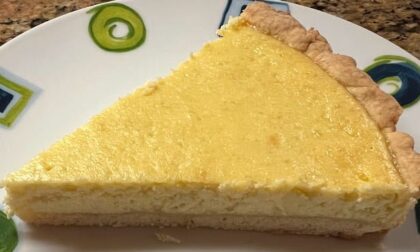Ragu Bolognese
This recipe is featured in Has A Cookbook Ever Changed Your Life?
This ragu Bolognese, adapted from The Spendid Table by Lynne Rosetto Kasper, is a rich dish suitable for festive occasions. With ground beef and pork, diced fatback, vegetables, milk, wine, and cream, it is classic Italian home cooking at its best. While it is excellent with purchased dried pasta, if you are feeling adventurous you could try making your own.
Ingredients
- 15 ml (1 tablespoon) olive oil
- 14 grams (1 tablespoon) butter
- 57 grams (2 ounces) pancetta, diced
- 1 medium onion, minced
- 2 celery stalks, minced
- 2 large carrots, minced
- Salt, as needed
- 454 grams (1 pound) ground beef
- 227 grams (½ pound) ground pork
- 177 ml (¾ cup) dry white wine
- 45 ml (3 tablespoons) tomato paste, preferably double or triple concentrated
- 177 ml (¾ cup) chicken stock, heated
- 118 ml (½ cup) whole milk, or as needed
- 60 ml (¼ cup) heavy cream
- Freshly grated nutmeg, as needed
Preparation
- In a Dutch oven over medium heat, add the olive oil and butter. Add pancetta and saute until the fat has rendered.
2. Add onion, celery and carrots with a large pinch of salt and cook until softened; ensure that the vegetables do not brown.
3. Add beef and pork and cook until meat no longer pink. Lower the heat if necessary to ensure the meat does not brown.
4. Add white wine and cook until fully absorbed. In a small bowl, combine the tomato paste and chicken stock, then add to the meat mixture. Reduce heat to low, and cover the Dutch oven placing a spoon or spatula at one end to create a small space for steam to escape.
5. Cook the sauce from anywhere between 2 to 4 hours. Add a tablespoon or so of whole milk every half hour and stir. The idea is to cook the sauce slowly to break down the vegetables into the sauce and allow the meat to absorb all the liquid. You will know your sauce is done when the liquid has been absorbed, and the meat is still moist.
6. Before serving, adjust salt, add the cream and some freshly grated nutmeg to taste. This is traditionally served over tagliatelle but is also excellent with pappardelle.





